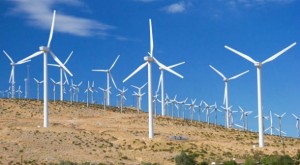 Today, the Texas Senate passed Senator Fraser’s anti-renewable energy Senate Bill 931. If passed by the House, this bill will abolish two of Texas’ few renewable energy programs – the renewable portfolio standard and building of competitive renewable energy zone transmission lines.
Today, the Texas Senate passed Senator Fraser’s anti-renewable energy Senate Bill 931. If passed by the House, this bill will abolish two of Texas’ few renewable energy programs – the renewable portfolio standard and building of competitive renewable energy zone transmission lines.
Job growth, economic development, stable business climate – I thought those were conservative bread and butter. The wind industry should have earned the good graces of Texas lawmakers. Wind farms annually pay over $85 million in taxes to rural Texas counties, plus about $65 million in lease payments to landowners.
 And the solar industry is rapidly becoming a significant driver of Texas job growth as well. As of November 2014, there were almost 7,000 solar jobs in Texas. That’s a 68% increase from 2013, a job growth rate 24 times greater than in the Texas economy overall.
And the solar industry is rapidly becoming a significant driver of Texas job growth as well. As of November 2014, there were almost 7,000 solar jobs in Texas. That’s a 68% increase from 2013, a job growth rate 24 times greater than in the Texas economy overall.
And yet, the Texas Senate has decided that Texas should have no renewable energy goal and that it should be more difficult for the Public Utility Commission of Texas (PUC) to build transmission lines to prime areas for wind and solar energy development.
Abolishing the Texas renewable energy portfolio standard would cause a devaluing of the Texas Renewable Energy Credit (REC) market and would cause renewable energy developers to lose a revenue stream they counted on when making investments. Existing projects used REC revenue when applying for financing. Now developers will have to go back to their financers and let them know that the Texas market has changed, and not for the better.
Competitive renewable energy zones have been established and transmission lines built to bring electricity from west Texas to the parts of the state where electricity is needed. But that project is not yet complete. Some of the best areas for solar energy development still have no transmission lines.
So, just as the solar energy is really starting to boom, the Texas Senate has voted to put the brakes on the policies that would best be able to allow this industry, as well as the wind industry, to grow successfully.
SB 931 heads to the Texas House of Representatives next, now is the time to call your Representative to voice your opposition to this anti-renewable energy bill. If you don’t know who represents you, look it up.






